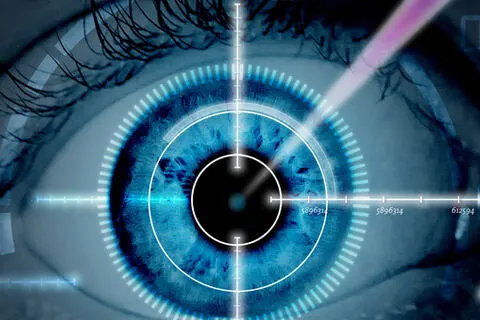Laser Safety

Lab laser safety standards are published by IEC and the Laser Institute of America. The most notable product is the IEC 60825 package, which contains requirements on the safety of various laser equipment and uses for them. It is supported with a compliance checklist, manufacturers checklist and a user's guide, and can be purchased at a discounted rate from buying all the documents separately. The other documents published by LIA contain laser safety protocol for a variety of different scenarios, including medical care, hazard evaluation, outdoor use, fiber optics, and many more. Laser technology is an expensive investment for the organizations that make the most use of them, so purchasing a standard as an immediately delivered PDF document can provide you with the knowledge to protect those investments.
IEC 60825 - Safety of Laser Products Package
IEC 60825 - Safety of Laser Products Package
The IEC 60825 - Safety of Laser Products Package provides requirements on the safety of various laser equipment and uses for them. It is supported with a compliance checklist, manufacturers checklist and a user's guide. The Safety of Laser Products Package is suitable for providers / recipients of laser service and manufacturers of laser products used in various industries not limited to: research, education, medical and consumer products. This collection contains: IEC 60825-1 Ed. 3.0 b:2014 IEC 60825-2 Ed. 4.0 b:2021 IEC 60825-2 Ed. 4.0 b cor.1:2021 IEC 60825-4 Ed. 3.0 b:2022 IEC 60825-12 Ed. 3.0 b:2022 IEC/TR 60825-13 Ed. 3.0 en:2022 IEC/TR 60825-14 Ed. 2.0 en:2022 IEC/TR 60825-17 Ed. 2.0 en:2015 IEC/TR 60825-3 Ed. 3.0 en:2022 IEC/TR 60825-5 Ed. 3.0 en:2019 IEC/TR 60825-8 Ed. 3.0 en:2022 IEC/TR 60825-9 Ed. 1.0 en:1999 - Historical Standard
ANSI Z136.1-2014
American National Standard for Safe Use of Lasers
Z136.1 provides guidance for the safe use of lasers and laser systems by defining control measures for each of seven laser hazard classifications. A practical means for accomplishing this is to (1) classify lasers and laser systems according to their relative hazards and to (2) specify appropriate controls for each classification. Once a laser or laser system is properly classified, there should be no need to carry out tedious measurements or calculations to meet the provisions of this standard. However, technical information on measurements, calculations and biological effects is also provided within the standard and its appendixes.
ANSI Z136.2-2012
Safe Use of Optical Fiber Communication Systems Utilizing Laser Diode and LED Sources
This standard addresses hazards and provides guidance for the safe use, maintenance, service, and installation (manufacturer) of optical communications systems (OCS) utilizing laser diodes or light emitting diodes (LED) operating at wavelengths between 0.6 ?m and 1 mm and not intended for visual communications.1
ANSI Z136.3-2018
Safe Use of Lasers in Health Care
This standard provides guidance for the safe use of lasers in health care. As defined herein, laser radiation refers to the ultraviolet, visible, and infrared regions of the electromagnetic spectrum. Laser radiation should not be confused with ionizing radiation or light from other sources.
ANSI Z136.4-2021
Recommended Practice for Laser Safety Measurements for Classification and Hazard Evaluation
This Recommended Practice provides guidance for optical measurements associated with laser safety requirements. The information contained in this document is intended to assist users who are entrusted with the responsibility of conducting laser hazard evaluations to ensure that appropriate control measures are implemented. It contains clearly written definitions, examples, and other practical information for manufacturers, laser safety officers, technicians, and other trained laser users.
ANSI Z136.6-2015
Safe Use of Lasers Outdoors
This standard provides guidance for the safe use of potentially hazardous lasers and laser systems (180 nm to 1 mm), in outdoor environments
ANSI Z136.7-2020
Testing and Labeling of Laser Protective Equipment
This standard provides recommendations for testing and labeling laser protective materials and protective equipment such as eye protection, barriers, and windows designed for use with lasers and laser systems that operate at wavelengths between 180 nm and 106 nm.
ANSI Z136.8-2021
Safe Use of Lasers in Research, Development, or Testing
One of the latest offerings in a range of vital resources for laser personnel. This standard includes policies and procedures to ensure laser safety in any area where research, development or testing is performed, including Universities, product development labs, private and government research labs (e.g., National Laboratories) and product testing settings. From this standard, LSOs will find useful guidance and recommendations for the safe use of lasers and laser systems that operate at wavelengths between 180 nm ultraviolet (UV) and 1 mm (1000 m) infrared (IR), used in research, development, or testing environments predominantly in an indoor setting. 2021 UPDATES TO THE STANDARD INCLUDE: New color figures; New Sample forms for: Room interlock checks; On-the-Job-Training; Barrier testing; Audits; Risk assessment; Expanded sections on: Robotics; Fiber optic use; Laser accidents; More detailed appendices on: High intensity lasers; Frequently asked program questions; Frequently asked technical questions; Regulatory overview; Laser Safety Officer (LSO) Duties and Responsibilities Table; Updated definitions. This standard is an invaluable resource for LSOs maintaining safety programs in research, development, or testing environments.
ANSI Z136.9-2013
American National Standard for Safe Use of Lasers in Manufacturing Environments
This standard provides recommendations for the safe use of lasers and laser systems that operate at wavelengths between 180 nm and 1 mm. Laser applications in the manufacturing environment include, but are not limited to, material processing, fabrication, laser alignment, leveling, inventory, metrology, and machine vision.





